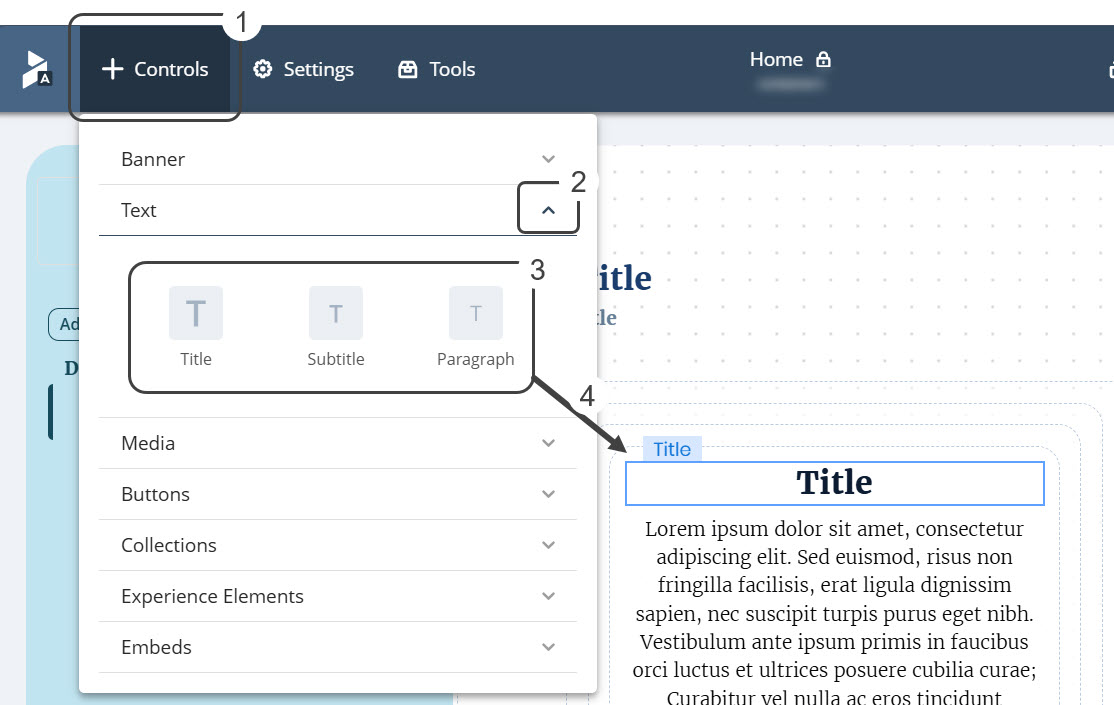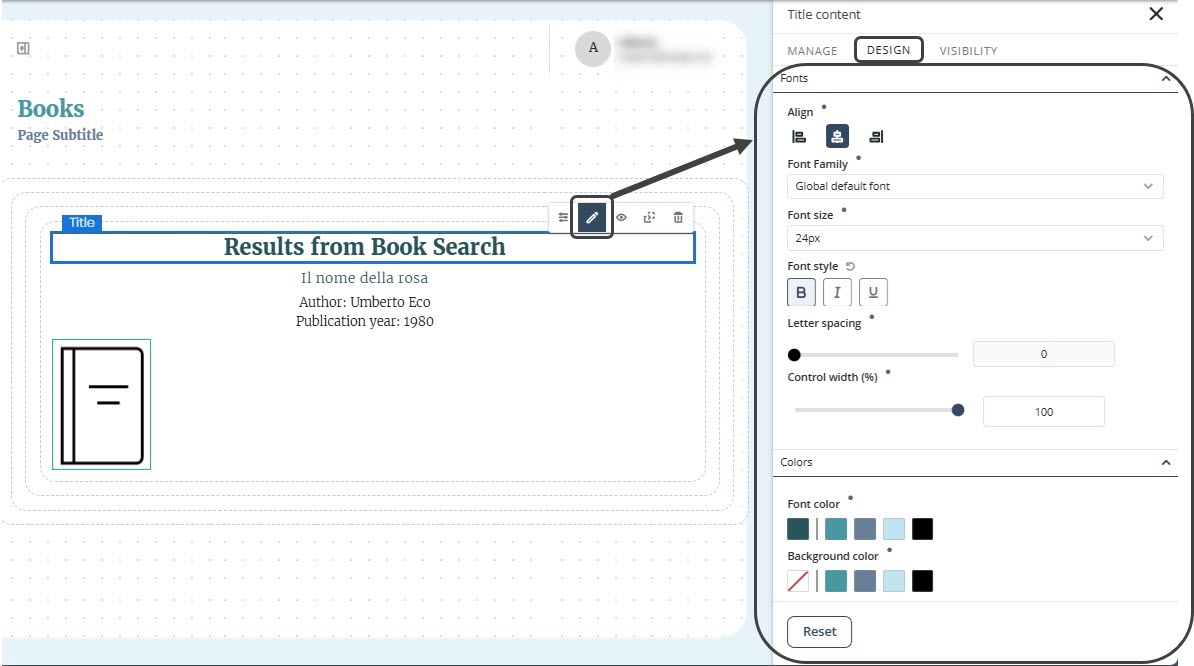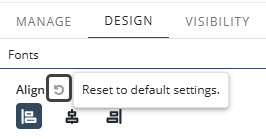Overview
In the App Designer editor, you can add read-only texts to your app. These texts can be static (defined in the App Designer editor) or dynamic, resolving the XPath of an existing attribute when a page is Detailed. You can use the text elements as titles, a set of instructions, or helpful information that users can read but not edit.
Add a Text control
To add a Text control, follow these steps:
1.Select the Controls option from the top menu. A list will be displayed with the different types of controls available.
2.Select the Text option within the list of controls.
3.You can choose between Title, Subtitle or Paragraph Text contols. To add one into the workspace simply click and drag it to the desired location within your app.

Manage content
When you add this control to a regular page in your app, the content will be static by default. Use the Manage Content option to provide the content of the text element, as seen in the picture below:

When the page is Detailed, you can select what kind of dynamic information to show about a user in a heading or paragraph. The User information options that can be displayed are the name, full name, and email of the user. In the same way, entity information such as name, text, and description can be displayed.

The following image displays the available Entity information options for the Text controls:

Text Design
To access the Text control’s Design tab, click the control and select the pencil icon. Use the available properties to customize the Text control. To restore all default settings, click the Reset button below.

Fonts
•Align: Set the text alignment to Left, Right, or Center.
•Font family: Set the font family for a text element. The default subtitle font family is Poppins Regular or the configured Global default font.
•Font size (px): Set the size of the text in the navigation panel.
•Font style: Apply Bold, Italic, and/or Underline formatting by selecting any combination of these options—or leave them unselected for no styling.
•Letter spacing: Increase or decrease the space between characters.
•Control width (%): Adjust the width of the Text control as a percentage of its container.
Colors
•Font color: Set the color of the text displayed in the navigation panel. The default color depends on the Theme selected.
•Background color: Set the background color for the control. The default color depends on the selected Theme.
Text Control Reset Properties for Individual Configurations
In addition to the Reset button that restores all modified properties in the Design tab, each property also has its own reset option.

•Properties with inherited values display a blue dot next to their title. This indicator allows you to make targeted adjustments without affecting other settings. Hover over the blue dot to see the source of the inherited value, giving you greater control over your text control’s appearance.

•When you modify a property marked with a blue dot, its individual Reset button appears. Clicking this button restores the property to its default inherited configuration.

|
•For details on customizing your app’s overall look, refer to the Typography, Themes and Controls style documentation in the App Designer editor. For example, you can set default typography or colors for all text controls by configuring them once. •The default Font style for the Title text control is bold. |
Text Visibility
This option allows you to select the entities or Personas that can have visibility of the text located on that page, as shown below:

Duplicate Text
To duplicate the text, you must select the following icon in the upper right edge of the control options.

Delete Text
To remove the text control, you must select the following icon in the upper right edge of the control options.

Last Updated 11/19/2025 12:00:19 AM